When you delve into the expansive universe of tattoo artistry, the color black often emerges as a foundational element, capable of expressing a vast spectrum of styles and intentions. While many associate black ink solely with traditional designs or simple outlines, its application in modern tattooing is incredibly diverse and sophisticated. Understanding the distinctions between related yet unique styles like Blackwork, Blackout, and Blast-over tattoos is crucial for anyone looking to get tattooed or simply to appreciate the depth of this art form. These styles, while all utilizing significant amounts of black ink, represent fundamentally different artistic approaches, historical contexts, and visual outcomes. For the uninitiated, the terms might seem interchangeable, but to experienced enthusiasts and artists alike, they denote distinct visual languages that speak volumes about the wearer’s aesthetic choices and the artist’s skill. This article aims to demystify these categories, providing a clear guide to their characteristics, creative potential, and the considerations involved in choosing one for yourself.
Understanding the core differences: blackwork vs. blackout vs. blast-over
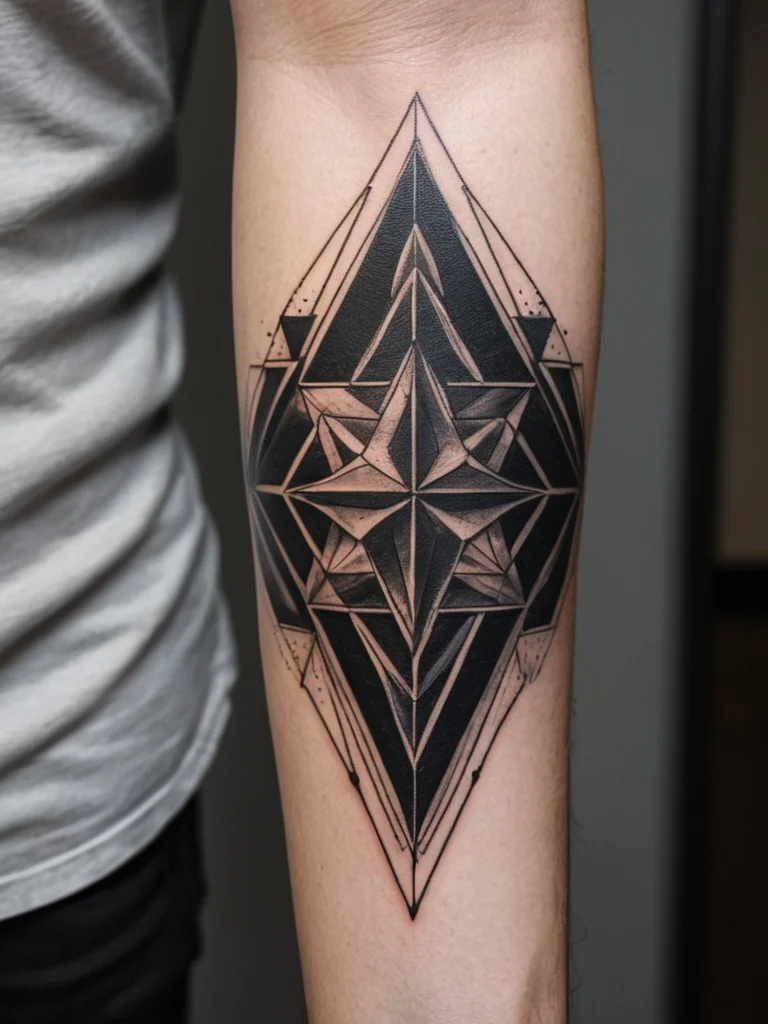
At its heart, the distinction between Blackwork, Blackout, and Blast-over tattoos lies in their purpose, execution, and the visual impact they create. Blackwork, in its broadest sense, is an umbrella term that encompasses any tattoo design that relies heavily on black ink, often forming the primary visual element. This can range from intricate geometric patterns and dotwork mandalas to bold, graphic designs and abstract compositions. The emphasis in Blackwork is on the artistic use of black ink itself – its density, shading, texture, and how it interacts with the skin and negative space to create form, depth, and visual interest. It’s about celebrating the pigment and the artistry of its application, often with a focus on precision and detail.
Blackout tattoos, on the other hand, represent a more extreme and definitive approach. They are characterized by large, solid areas of black ink, designed to cover significant portions of the body. Think of them as wearable canvases of pure black, often used to cover up old tattoos, to create a bold aesthetic statement, or even as a form of personal expression that rejects traditional tattooing norms. The defining feature of a Blackout tattoo is its complete saturation of skin with ink, creating a stark, opaque effect. It’s less about intricate detail and more about the sheer volume and impact of the black pigment.
Blast-over tattoos occupy a unique space, existing as a modification or enhancement of existing ink. A blast-over is essentially a new tattoo, typically rendered in a bold style with a heavy emphasis on black ink, that is intentionally tattooed *over* a pre-existing tattoo, often one that the client wishes to change, cover, or modernize. The goal here is not necessarily to completely obliterate the old tattoo (though that can be a part of it), but rather to integrate it into a new design, using the black ink to create a powerful contrast and new visual narrative. The ‘blast-over’ technique often involves bold lines, solid black areas, and striking imagery that overpowers or reinterprets the underlying design. It’s a dynamic way to evolve one’s existing body art, giving old ink new life through aggressive, attention-grabbing blackwork.
To summarize, Blackwork is about the artistic application of black ink in various designs and patterns; Blackout is about covering large areas with solid black ink; and Blast-over is about tattooing new black ink over old tattoos. Each serves a different artistic purpose and results in a distinct visual identity.
Blackwork tattoo breakdown: what it is and how to spot it
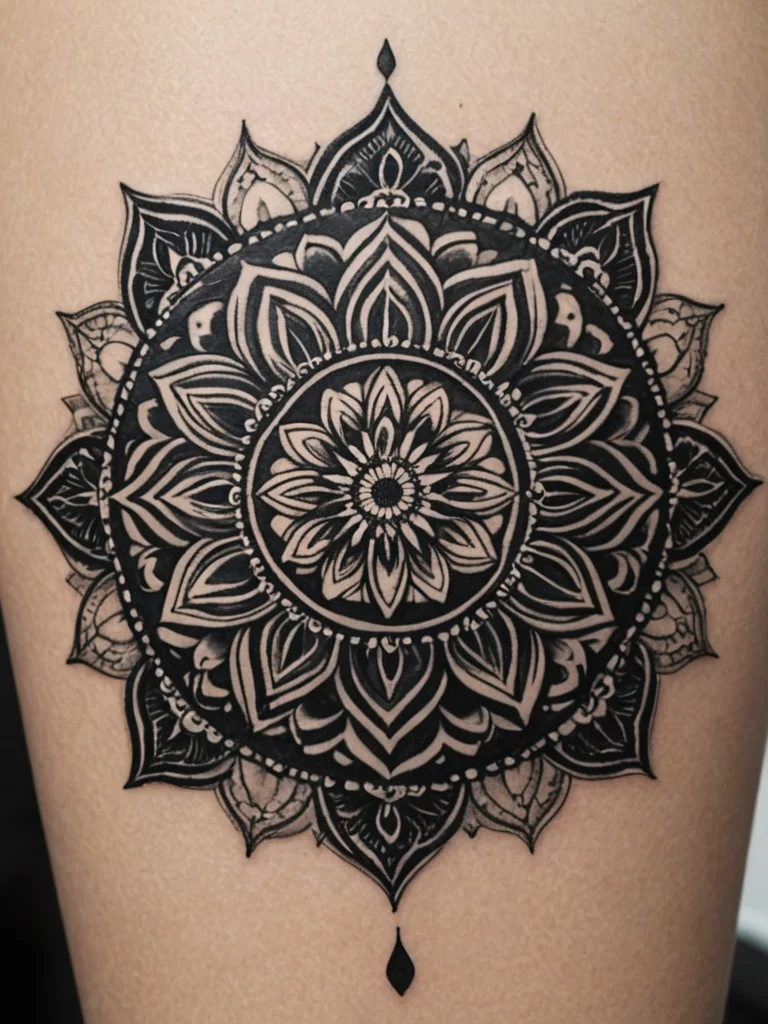
Blackwork is a versatile and expansive category within tattoo art. It’s defined by its primary reliance on black ink to create intricate designs, patterns, and imagery. Unlike many other tattoo styles that use color or a full spectrum of shading to achieve their visual effects, Blackwork artists masterfully utilize the density, application techniques, and negative space of black ink to craft compelling pieces. This can manifest in numerous sub-styles, each with its own unique aesthetic and technical demands.
One of the most recognizable forms of Blackwork is geometric tattooing. This style involves the precise arrangement of lines, shapes, dots, and patterns to create complex, often symmetrical compositions. Think of sharp, clean lines forming intricate grids, angular patterns reminiscent of sacred geometry, or mesmerizing dotwork filling spaces to create gradients or textures. Artists specializing in geometric Blackwork often employ highly technical skills, focusing on precision and mathematical accuracy to bring these designs to life. The visual impact can range from minimalist and clean to incredibly detailed and almost kaleidoscopic.
Dotwork, closely related to geometric styles, is another prominent element within Blackwork. This technique involves building up images, shading, and textures using only dots of varying density and size. A skilled dotwork artist can create incredibly soft gradients, deep shadows, and intricate details, all from countless individual points of ink. Tribal tattoos, particularly those inspired by traditional Polynesian, Maori, or indigenous cultures, often feature bold black lines and solid fill areas that fall under the Blackwork umbrella. These designs are rich in cultural significance and symbolism, often telling stories or representing lineage and identity.
Other forms of Blackwork include abstract designs, floral patterns rendered entirely in black linework and shading, and illustrative pieces that use black ink to create bold contrasts and dramatic effects. The key characteristic you’ll notice across all these variations is the deliberate and artistic use of black ink as the sole or dominant medium. You’ll see a clear intention behind the placement of every line, dot, and filled area, aiming to create a cohesive and aesthetically pleasing design. It’s not just about filling space with black; it’s about sculpting with it, using its weight, depth, and ability to create sharp contrasts or soft transitions to define the artwork. The absence of color forces a heightened focus on form, composition, and the texture created by the ink itself.
Blackout tattoo explained: the art of solid ink coverage
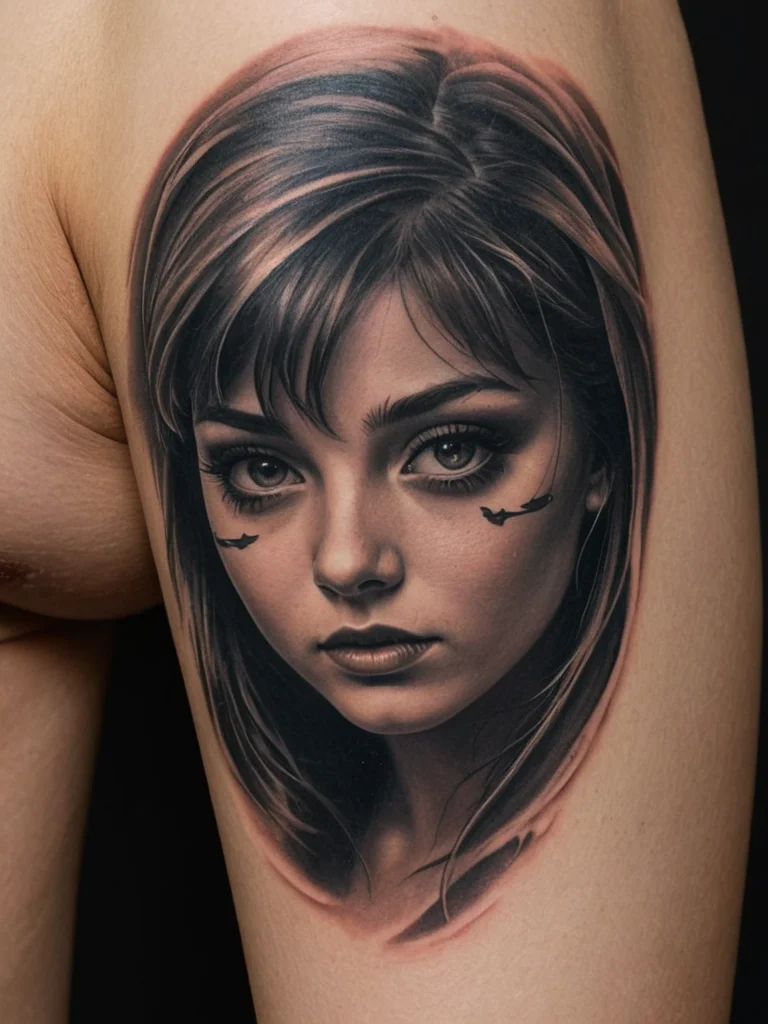
Blackout tattoos represent a commitment to a bold, minimalist, and often dramatic aesthetic, characterized by extensive areas of solid black ink. These are not subtle pieces; they are designed to make a statement, covering large swathes of the body with an opaque layer of black pigment. The intention behind a Blackout tattoo can vary significantly. For some, it’s a way to cover up unwanted or old tattoos that are beyond simple cover-up by other means, effectively erasing the past and creating a clean slate. For others, it’s a deliberate aesthetic choice, embracing the stark, graphic impact of solid black as a form of body art and personal identity.
The process of creating a Blackout tattoo is labor-intensive and requires significant stamina from both the client and the artist. It involves meticulously filling large areas of skin with solid black ink, often working in layers to ensure even saturation and depth. This can be an uncomfortable process, especially in sensitive areas, and requires multiple sessions to complete safely and effectively. Artists must possess a deep understanding of how ink behaves in different skin tones and areas of the body to achieve a uniform and lasting result. The goal is to achieve a smooth, consistent finish that reads as a solid mass of black, with no patches of skin showing through or uneven saturation.
Visually, Blackout tattoos are striking due to their sheer scale and intensity. They can be used to create dramatic contrast against the natural skin tone, or to form larger artistic compositions when combined with negative space or other elements. Some blackout pieces are designed to completely encase a limb or torso, creating a unique, almost sculptural effect. Others might be more strategic, creating bold panels or shapes that define or accentuate the body’s form. The beauty of a blackout tattoo often lies in its simplicity and the power of its unadulterated blackness. It’s a testament to the transformative power of ink, often viewed as a bold declaration of self, a reclamation of the body, or an embrace of a powerful, elemental aesthetic. The dedication required to undergo such extensive work also adds to the personal significance of these pieces for many individuals.
When considering a Blackout tattoo, it’s essential to have a frank discussion with your artist about the permanence, the process, and the potential for future modifications. Because these tattoos are so saturated, covering them with other colors or designs later can be extremely challenging, if not impossible. Therefore, the decision should be made with careful consideration and a clear understanding of the lifelong commitment involved. The result, however, can be a truly unique and powerful form of self-expression.
Blast-over tattoo: transforming existing ink with bold black
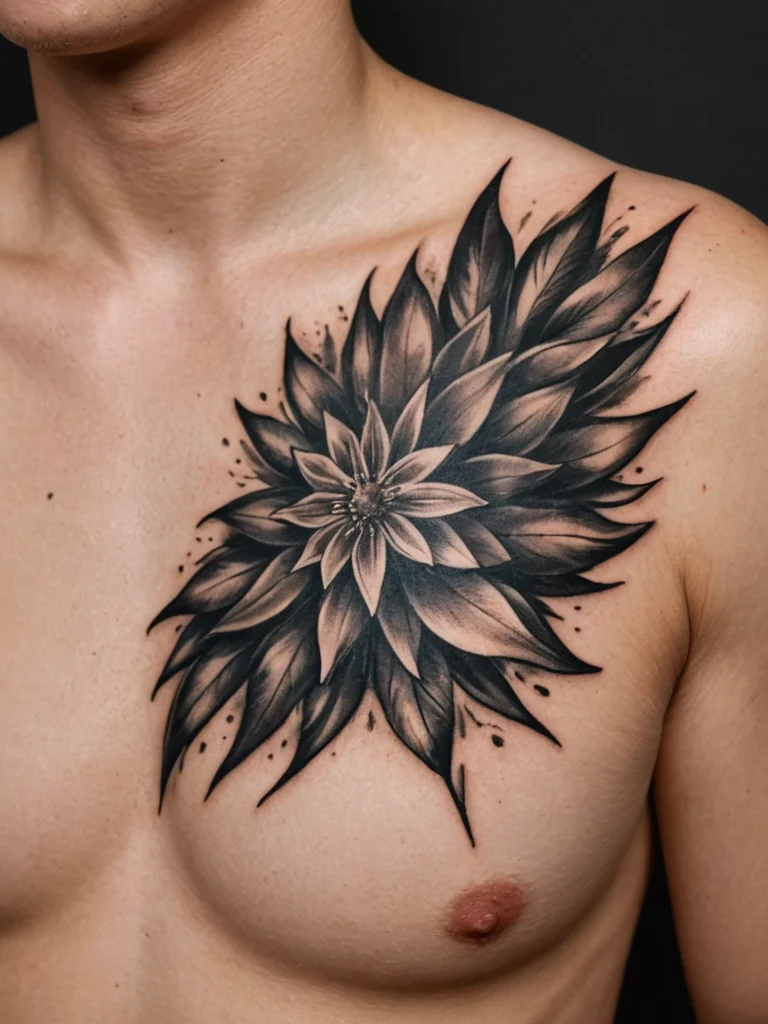
The blast-over tattoo is a dynamic and often transformative approach to body art, specifically designed to revitalize or completely alter existing tattoos by layering new, bold black ink designs over them. This technique is particularly effective when a client is unhappy with an older tattoo, finds it outdated, or simply wants to give it a fresh, modern aesthetic. Instead of a complete removal or a traditional cover-up, which aims to conceal the old ink entirely, a blast-over intentionally incorporates the underlying design into a new, more powerful composition, using black ink as the primary tool for this transformation.
The ‘blast-over’ concept implies an aggressive, impactful application of new ink. Tattoo artists will typically use bold linework, heavy shading, solid black fill, and striking imagery – often geometric patterns, abstract elements, or strong illustrative motifs – to ‘blast over’ the existing tattoo. The new ink is strategically placed to cover parts of the old design while also allowing elements of the original tattoo to subtly (or not so subtly) show through, creating a layered, complex visual narrative. This interplay between the old and the new can result in a visually rich and unique piece of art. For instance, a faded floral tattoo might be blasted over with sharp, black geometric shapes, where the curves of the petals might still be discernible within the new structure, adding an unexpected depth.
This style is a fantastic option for those who want to embrace their tattoo history rather than erase it. It demonstrates a level of artistic confidence and a willingness to experiment with form and composition. The success of a blast-over heavily relies on the skill and vision of the tattoo artist. They need to be able to assess the existing tattoo, understand its color palette and line weight, and then conceptualize a new design that will effectively complement, contrast with, or overpower the old ink without creating a muddy or disorganized result. Artists often recommend bold, dark designs for blast-overs, as lighter colors or finer lines from the original tattoo might show through more prominently if not adequately covered by dense black ink.
Blast-overs offer a compelling way to breathe new life into worn-out or disliked tattoos. They allow for a creative dialogue between the past and present of one’s body art, resulting in pieces that are often more intricate and meaningful than the original. It’s a testament to the evolving nature of tattoo culture and the continuous innovation in techniques and styles available to clients.
Choosing your black ink style: factors to consider for your next tattoo
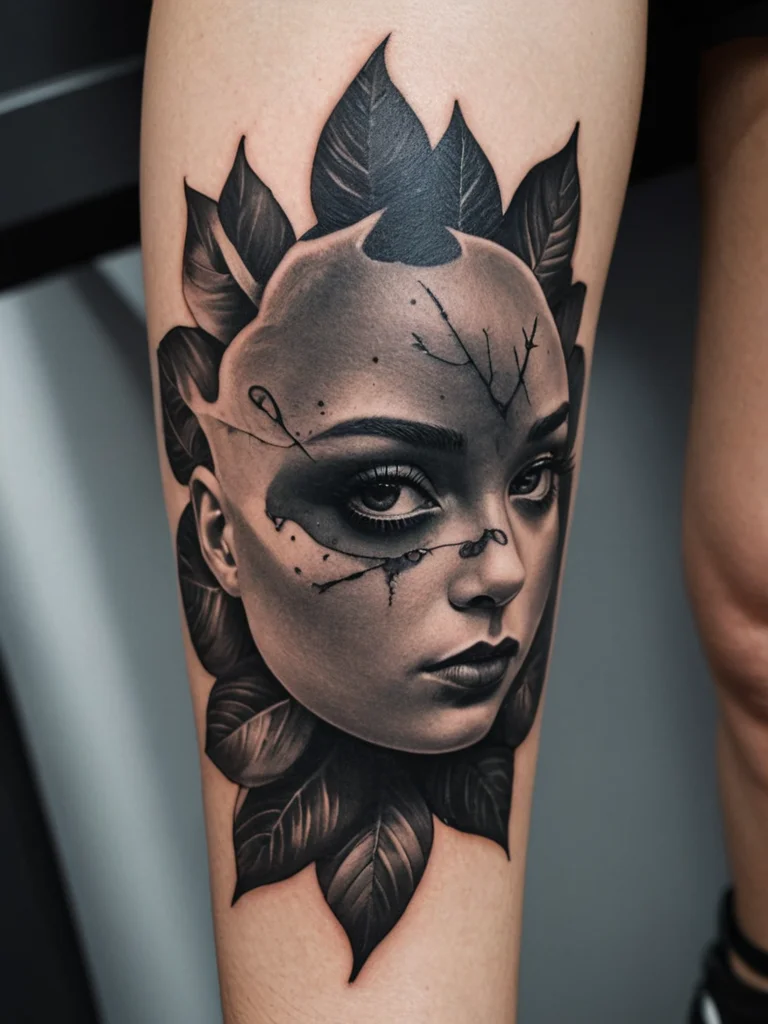
Deciding to incorporate significant black ink into your tattoo collection is an exciting step, but with the diverse styles available—Blackwork, Blackout, and Blast-over—making the right choice requires careful consideration. Each style offers a unique aesthetic and carries different implications in terms of process, healing, and longevity. Your personal style, aesthetic goals, and the specific placement on your body will all play a crucial role in guiding your decision.
First, consider your overall aesthetic. If you are drawn to intricate patterns, geometric precision, or detailed illustrative designs where black ink is used artistically to create form and texture, Blackwork might be the ideal path. This style allows for a high degree of customization and can be adapted to various body parts and sizes, from delicate wrist pieces to full sleeves. The focus is on the artistry and detail of the design itself.
If you are looking for a bold, minimalist, and impactful statement, perhaps to cover a large area or to create a striking visual effect, then a Blackout tattoo could be what you’re seeking. This style is about embracing large masses of solid black and its intensity. It’s a more extreme choice that requires a significant commitment, both in terms of the tattooing process and the visual permanence. It’s important to be certain about this direction, as altering a Blackout tattoo later is exceptionally difficult.
If you have existing tattoos that you wish to transform or update, a Blast-over tattoo offers a creative and dynamic solution. This style is perfect for those who want to build upon their tattoo history, giving old ink new life through the power of bold black designs. It’s a testament to evolving tastes and the artist’s ability to integrate new elements with existing ones, creating something entirely new and compelling.
Beyond aesthetics, think about the practical aspects. Blackwork, with its varied techniques, can be relatively adaptable in terms of healing, depending on the density of the ink. Blackout tattoos, due to their extensive coverage, will require more extensive healing time and care. Blast-overs also require careful healing, as the skin will have undergone multiple layers of tattooing. Consult with your chosen artist about their experience with each style and their recommendations for placement, design, and aftercare. Ultimately, the best black ink style for you is the one that resonates most deeply with your personal expression and artistic vision.